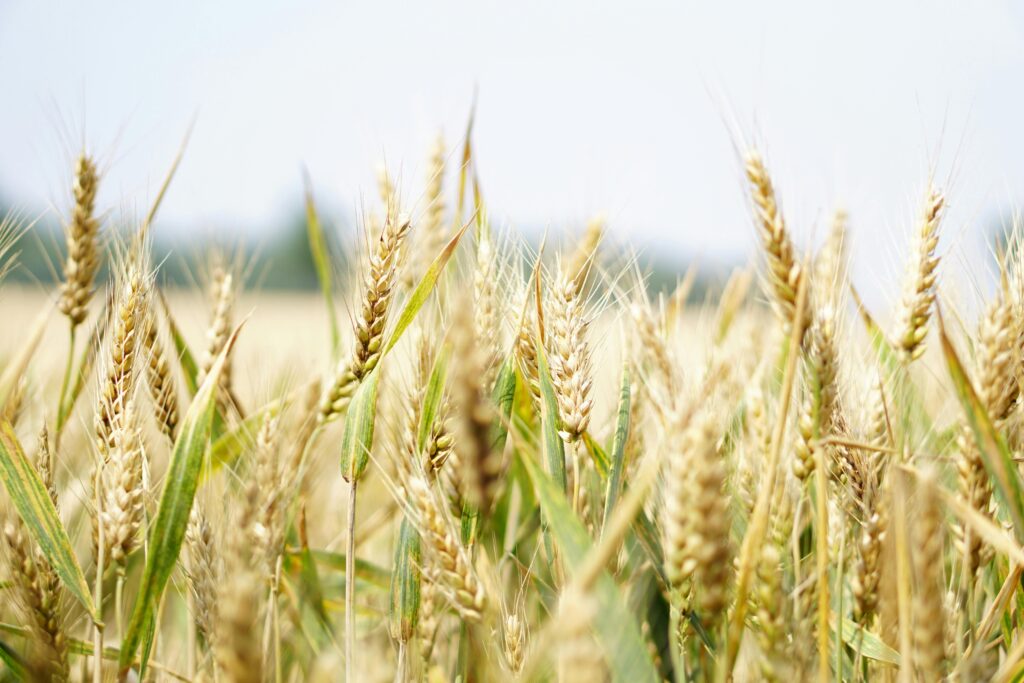
Barley, a crucial cereal crop, is known for its remarkable ability to withstand harsh environmental conditions, including drought. In a groundbreaking study, researchers have uncovered the genetic basis behind this drought tolerance, paving the way for developing more resilient barley varieties. By leveraging the power of genome-wide association studies (GWAS), the team identified key genetic regions and candidate genes that play pivotal roles in enabling barley to thrive even under severe water scarcity. This discovery not only has significant implications for the future of global food security but also sheds light on the complex mechanisms plants employ to adapt to climate change. Barley, a versatile crop used for animal feed, malting, and brewing, is a prime example of how understanding the genetic underpinnings of abiotic stress tolerance can revolutionize agriculture. This research represents a major step forward in our quest to future-proof our food supply and ensure sustainable crop production in the face of increasingly unpredictable weather patterns.
Unraveling the Genetic Tapestry of Drought Tolerance
Drought is a primary threat to global agriculture, potentially impacting up to 70% of current crop yields worldwide. As climate change continues to disrupt weather patterns, the ability to develop drought-resistant crop varieties has become a pressing concern. Barley, known for its exceptional abiotic stress adaptation among cereals, has emerged as a valuable model for studying the genetic basis of drought tolerance.
A Comprehensive Approach to Drought Stress Screening
In this groundbreaking study, researchers examined a diverse collection of 164 spring barley lines, known as the mini-core population. This population was carefully selected to capture the vast genetic diversity present in the larger USDA barley iCore collection. The researchers employed a multi-pronged approach to assess the barley lines’ response to drought stress.

First, the team subjected the mini-core population to polyethylene glycol (PEG)-induced drought stress during the critical stages of germination and seedling development. This method allowed for precise control over the water deficit experienced by the plants, enabling the researchers to measure a range of traits, including germination percentage, seedling length, and root-to-shoot ratios.
In addition to the PEG-based screening, the researchers also exposed the barley lines to short-term drought stress during the heading stage in a greenhouse setting. This allowed them to evaluate the plants’ response to drought at a later developmental stage, measuring traits such as root and shoot biomass, as well as grain yield.
Uncovering the Genetic Landscape of Drought Tolerance
By leveraging the power of GWAS, the researchers were able to identify a total of 87 high-quality genetic markers (SNPs) associated with various drought-related traits across the seven barley chromosomes. These markers were found to be linked to genes involved in critical processes such as stress signaling, lipid metabolism, DNA replication, and mitochondrial function.

For instance, the researchers identified a leucine-rich repeat receptor-like kinase gene that was associated with germination rate under drought conditions. This class of proteins has been previously linked to seed germination, ABA signaling, and drought stress response in other plant species.
Another noteworthy finding was the identification of genes involved in very long-chain fatty acid (VLCFA) synthesis. VLCFAs are essential precursors for membrane lipids, cuticular waxes, and seed oils, all of which play crucial roles in plant adaptation to drought stress.
The researchers also discovered genetic regions harboring genes related to DNA replication and repair, highlighting the importance of these processes in enabling plants to withstand the damaging effects of drought.
Bridging the Gap between Genetics and Physiology
To further validate the relevance of the identified genetic markers, the researchers examined the expression patterns of the candidate genes in various barley tissues and under different stress conditions. This in-silico analysis revealed that many of the identified genes showed differential expression in response to drought, corroborating their potential role in drought tolerance.
By integrating the genetic and physiological data, the researchers were able to identify several barley lines that exhibited exceptional drought tolerance throughout the various developmental stages. These lines, which maintained high germination rates and robust root systems under PEG-induced stress, as well as minimal yield losses under short-term greenhouse drought, could serve as valuable resources for future breeding efforts.
Unlocking the Future of Drought-Resilient Barley
This comprehensive study not only unravels the complex genetic underpinnings of drought tolerance in barley but also paves the way for the development of more resilient crop varieties. The identified genetic markers and candidate genes can be leveraged in marker-assisted selection and biotechnological approaches to enhance drought tolerance in barley and potentially other cereal crops.
As the world grapples with the challenges posed by climate change, this research represents a significant step forward in our quest to ensure global food security. By understanding the genetic basis of drought resilience in barley, scientists can now work towards breeding and engineering crops that can thrive in the face of increasingly unpredictable weather patterns, helping to secure a sustainable future for agriculture.
Author credit: This article is based on research by Connor Slawin, Oyeyemi Ajayi, Ramamurthy Mahalingam.
For More Related Articles Click Here
